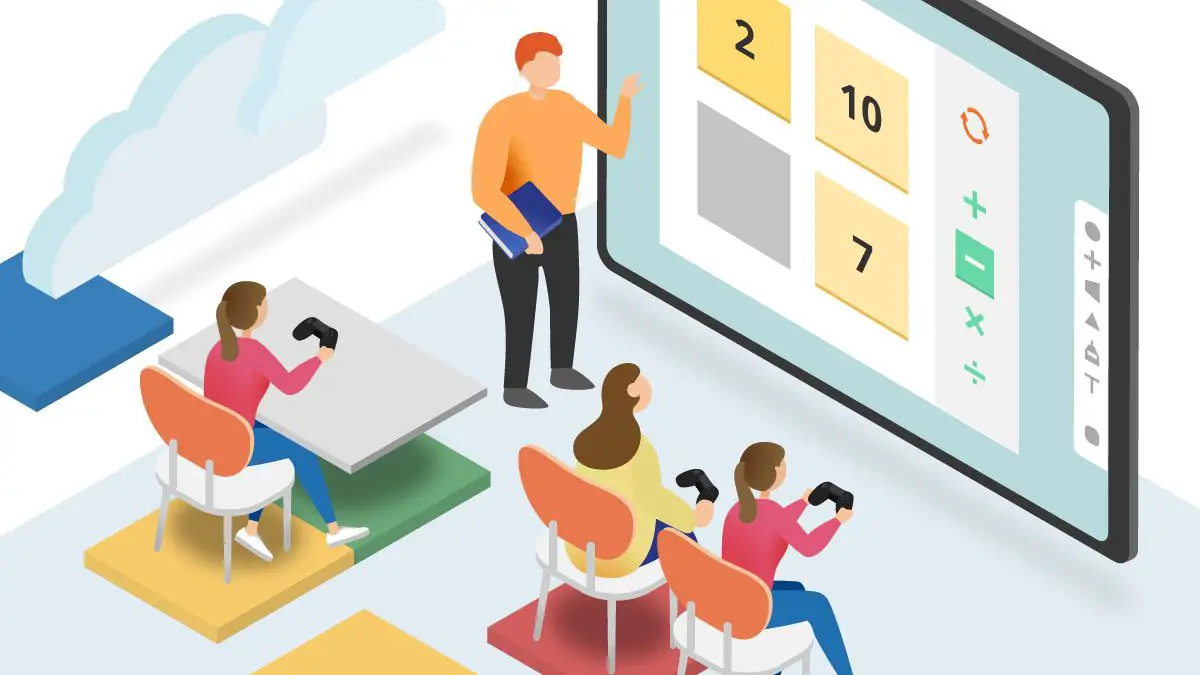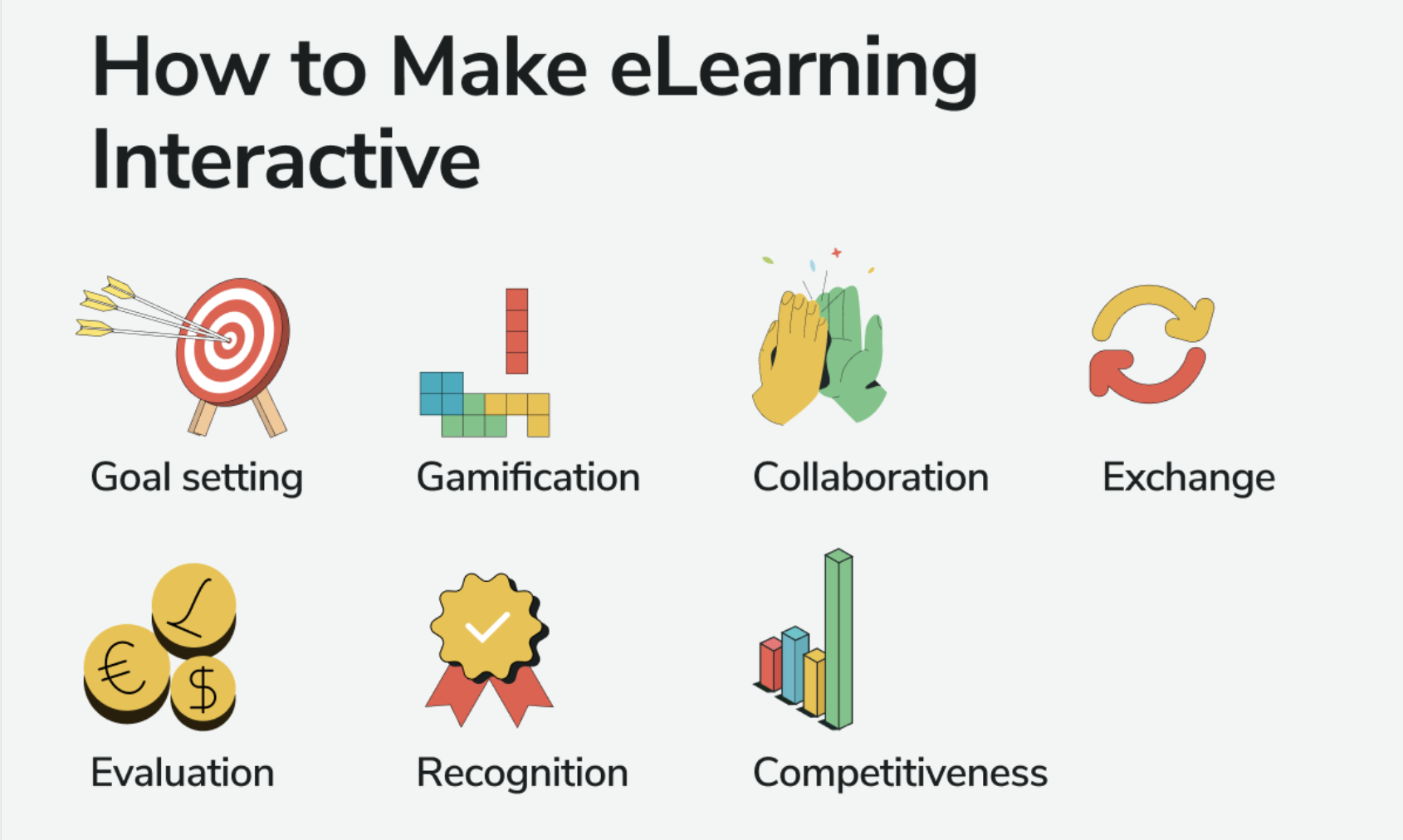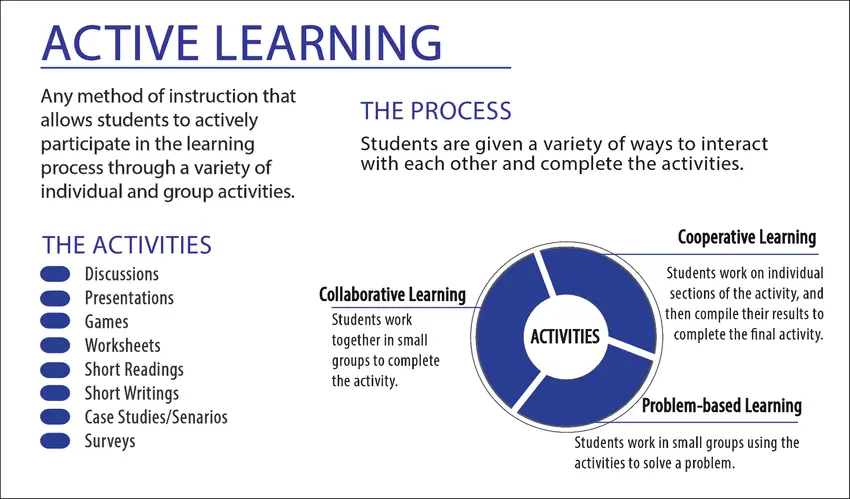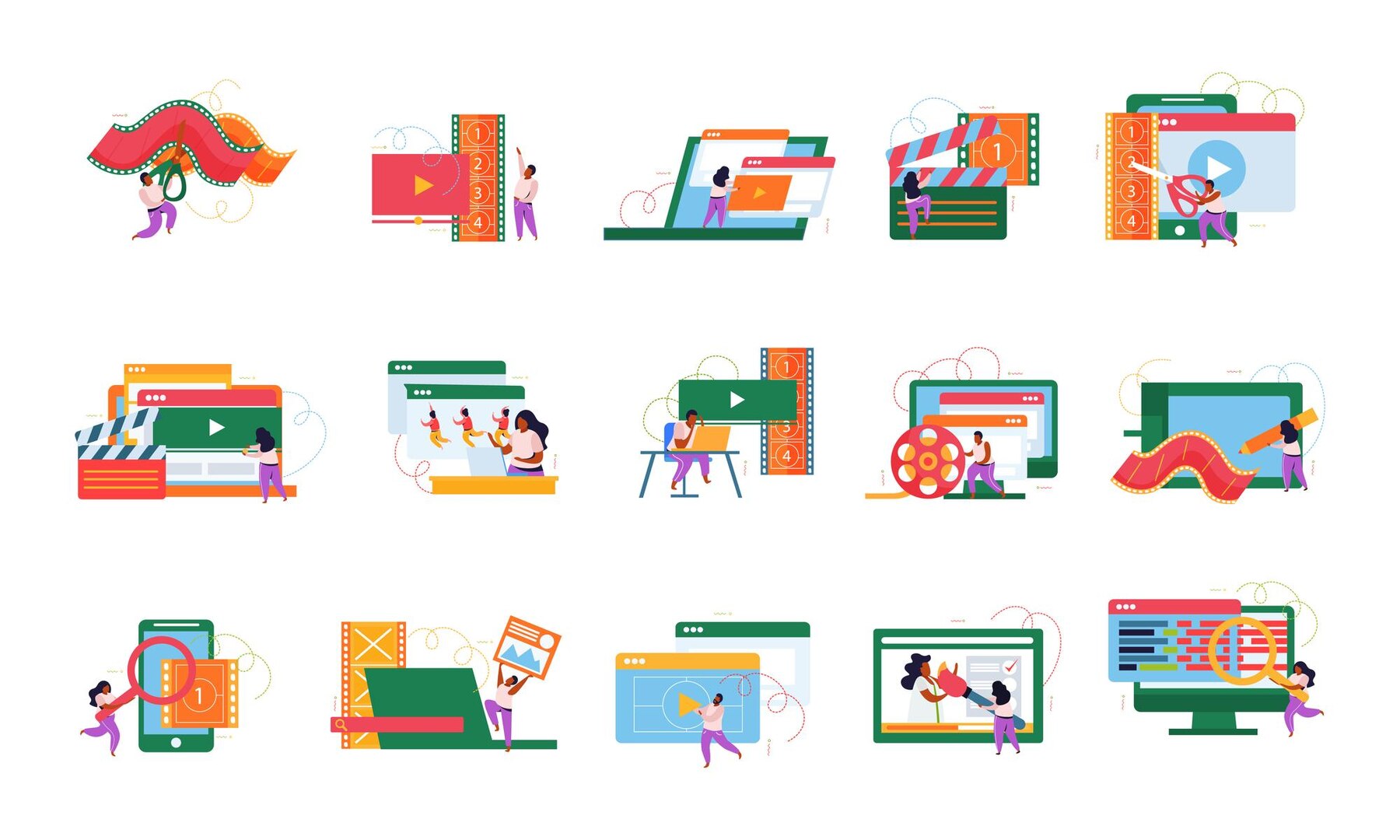Hello and welcome, future course creators and digital educators! Are you gearing up to make a splash in the exciting and ever-evolving world of interactive online training? Whether you’re a seasoned educator with years of experience under your belt or a newcomer taking your first steps into the vast and vibrant realm of eLearning, you’ve come to the right place. This comprehensive guide is meticulously crafted to assist you on your journey of crafting an interactive course that stands out in the crowded digital landscape.

In the following sections, we’ll delve deep into a treasure trove of tips, tricks, and invaluable insights, all aimed at transforming a standard online course into an extraordinary, interactive learning adventure. Our focus is not just on the ‘what’ but also the ‘how’ of creating courses that captivate, engage, and educate. We understand that the world of online education is not just about transferring knowledge; it’s about creating an experience, a journey that your learners embark on, eager and excited at every turn.
As we progress, you’ll learn how to weave interactivity into the fabric of your course, making each module not just a lesson but an engaging experience. From leveraging the latest tools and technologies to understanding the psychology behind learner engagement, we’re covering all bases to ensure you’re well-equipped to create a course that’s not only informative but also irresistibly engaging.
I would probably need a 3 hour one on one interactive course to get that to be even have a chance of it being coherent, and it would basically involve teaching me a new language.
— Core Arm (@CoreArm) November 28, 2023
So, are you ready to transform your vision into a vibrant virtual classroom? Are you excited to redefine the learning experience for your students? Let’s embark on this transformative journey together and unlock the full potential of interactive online learning.
For those interested in course creation, we suggest reading our article on the 15 Best Course Creation Software Tools for Crafting Engaging and Interactive Online Learning Experiences. Let’s get started, and let the adventure begin!
What you’ll find on this page:
- What Is Interactive eLearning? →
- Why Bother with Interactivity? →
- The Difference Between Active and Passive Learning →
- 8 Ways to Create More Interactive Online Learning →
- Conclusion →
What Is Interactive eLearning?
Engaging with interactive eLearning implies that learners interact indirectly with instructors; it’s akin to a “dialogue” between the learner and tools that facilitate their active involvement in the learning process.

Interactive eLearning is an immersive and dynamic approach to education, characterized by several key features:
- Engagement Beyond Traditional Learning: Unlike traditional learning methods that primarily involve lectures and textbooks, interactive eLearning is about creating an immersive learning environment. This approach transforms learners from passive recipients of information into active participants.
- Multimedia Integration: Interactive eLearning combines various media forms like videos, animations, simulations, and interactive assessments. This integration creates a rich, engaging learning experience that caters to different learning styles and preferences.
- Two-Way Interaction: This method promotes a two-way interaction between the learner and the content. Learners are encouraged to interact, explore, and engage with the material, making the learning process more meaningful and memorable.
- Personalization and Adaptability: Interactive eLearning allows for a high degree of personalization. Learners can choose their learning paths, pace, and strategies, which makes education more relevant and effective for each individual.
- Social Interaction and Collaboration: It includes collaborative tools that enable learners to connect with peers and instructors. This fosters a community of learners who support and learn from each other, enhancing the overall learning experience.
- Utilization of Advanced Technologies: The use of cutting-edge technologies like augmented reality (AR), virtual reality (VR), and artificial intelligence (AI) enhances interactive eLearning. These technologies create realistic environments for hands-on experiences in a controlled setting.
- Focus on Active Learning Experience: Interactive eLearning is about creating an adventure in learning. It’s not just a task but a journey of discovery, engagement, and growth. This approach aims to excite and inspire learners, leading to a deeper and more lasting educational impact.
Why Bother with Interactivity?
Picture yourself on a long drive down a familiar highway. The scenery is unchanging, the road stretches endlessly ahead, and there’s nothing noteworthy to catch your eye. It’s a scenario that’s deceptively dangerous. The monotony can lead to reduced concentration, and in such a state, even a small surprise can have significant consequences. Think of those moments in horror movies when an unexpected deer jumps into the road.

Similarly, in the realm of learning, the absence of learner engagement might not be life-threatening, but its effects can be severely detrimental. A lack of attention leads to inefficient use of resources, repeated mistakes, and ultimately, the failure of the training program.
Here’s the silver lining: effective, well-planned interactive elements can significantly boost engagement levels, regardless of the training format — be it online, offline, or a blended approach. And by ‘well-planned’, we don’t mean overloading every course slide with excessive flair and distractions. Instead, it’s about striking the right balance, where interactivity serves to enhance the learning experience without overshadowing the content itself.
The Difference Between Active and Passive Learning
Active learning is an immersive, hands-on approach to education, where students are not just observers but active participants. It involves techniques like problem-solving exercises, group discussions, case studies, and realistic scenarios. Quizzes and interactive assessments also play a key role in testing and reinforcing students’ understanding. Crafting courses with active learning elements requires a bit more creativity and effort, but the payoff is substantial. These methods not only make your courses more engaging and memorable but also help them stand out in a sea of conventional educational content.
On the other hand, passive learning typically involves students receiving information passively, often through lectures or reading assignments. This method is useful for covering large amounts of material efficiently. However, it tends to be less interactive and thus, less engaging. Students in a passive learning environment may find it challenging to fully grasp and apply the knowledge they receive. They are more likely to be mere recipients of information rather than active contributors to their own learning process. This can lead to a surface-level understanding of the material, without the deeper comprehension and skill development that active learning fosters.
| Active eLearning | Passive eLearning |
| Learning by doing | Learning by observing and listening |
| Practical exercises are an integral part of the learning process | There is a delay between lectures and practical exercises |
| Diverse tasks and modules | Monotonous pace |
| Collaborative learning space and healthy competition | Isolated learning space |
| Positive emotional response and higher motivation | Lack of engagement and decreasing motivation |
8 Ways to Create More Interactive Online Learning
In the ever-evolving landscape of online education, the challenge is not just to teach but to engage. In a world where digital distractions are just a click away, how do you ensure that your online course captivates and maintains the attention of learners? The key lies in interactivity. To help you navigate this path, we’ve compiled 8 essential tips that can transform your online course into an interactive, dynamic, and effective learning journey. From incorporating active learning techniques to leveraging the latest in educational technology, these strategies are designed to captivate your learners and provide an enriching educational experience.

1. Incorporate Active Learning
Engaging students actively is paramount to a successful online learning experience. By utilizing methods such as problem-solving, group discussions, and case studies, educators can immerse learners in the educational process. For example, kick off the course with interactive group chats on relevant topics or incorporate short quizzes that challenge their comprehension.

Tool to Enhance This: Kahoot!
Kahoot! stands out as an exceptionally effective tool for active learning, leveraging its capacity to create competitive and enjoyable learning environments through quizzes and polls. Its intuitive design not only facilitates seamless integration into the learning experience but also actively encourages student engagement and participation.
Why it Works:
- Fosters Deeper Understanding: Active learning goes beyond passive consumption, encouraging participation and thus fostering a profound understanding of concepts.
- Stimulates Critical Thinking: The emphasis on problem-solving and discussions stimulates critical thinking, empowering learners to apply acquired knowledge in real-world scenarios.
Additional Tips:
- Real-World Application: Enhance active learning by incorporating real-world scenarios and case studies relevant to the course content.
- Peer Teaching and Collaboration: Implement peer teaching or collaborative projects to further enrich the interactive learning experience, fostering a sense of shared responsibility and understanding among students.
View the video tutorial to discover how to craft a compelling and interactive presentation using Kahoot!
2. Combine Different Media Types
In the contemporary landscape of education, learners are immersed in a diverse and dynamic media environment. Elevate their learning experience by seamlessly blending various media types, including videos, photos, infographics, and interactive elements. To deepen engagement, consider augmenting visual elements with annotations, links, or voice explanations.

Tool to Facilitate This: Canva
Canva emerges as a standout tool for educators aiming to create diverse and visually engaging content. Its user-friendly features empower educators to craft professional-grade graphics, thereby enhancing the visual appeal and accessibility of course materials.
Why it Works:
- Caters to Diverse Learning Styles: Multimedia content acknowledges and accommodates the varied learning styles of today’s students, ensuring a more inclusive and effective learning experience.
- Enhances Engagement and Understanding: The integration of interactive elements within multimedia content not only captures attention but also actively promotes deeper engagement and understanding of the course material.
Additional Tips:
- Relevance to Learning Objectives: Ensure that the selected media is not only visually appealing but also directly relevant to the learning objectives of the course, maintaining a cohesive and purposeful educational experience.
- Empower Student Creators: Encourage students to actively participate in the learning process by creating their own multimedia content. This not only fosters a sense of ownership but also reinforces their understanding of the subject matter through creative expression.
Explore our article, “The Ultimate Guide to Selecting 14 Industry-Leading Explainer Video Software Solutions for Your Creative Projects,” to gain insights on creating videos for your course.
View the video on crafting interactive lesson plans and discover the process of building a course utilizing various media types.
3. Try Running a Cohort-Based Course
Cohort-based learning introduces a social dimension to the realm of online courses. By progressing through the material together, students cultivate a sense of community and collaboration that extends beyond the digital divide. This approach immerses learners in a shared experience, fostering not only a deeper understanding of the lessons but also promoting critical thinking and peer-driven learning. To fully harness this collaborative potential, leverage dedicated platforms for group discussions and establish regular check-ins to maintain a vibrant and engaged learning community.

Tool to Support This: Slack
Slack stands out as an ideal tool for facilitating communication and collaboration within cohort-based settings. Its versatile features, including the creation of organized channels for various topics and discussions, make it an invaluable asset for maintaining group cohesion and fostering interactive engagement.
Why it Works:
- Builds Community and Accountability: Cohort-based learning nurtures a shared journey, fostering a sense of community and mutual accountability among learners, thereby enhancing the overall learning experience.
- Facilitates Continuous Interaction and Collaboration: The structure of cohort-based courses ensures ongoing interaction and collaboration, creating an environment where learners can benefit from diverse perspectives and shared insights.
Additional Tips:
- Schedule Regular Virtual Meetups or Webinars: Beyond the digital curriculum, organize regular virtual meetups or webinars to strengthen the sense of community. These events provide opportunities for real-time interactions and discussions.
- Encourage Group Projects or Discussions: Foster deeper collaboration by encouraging group projects or discussions within the cohort. This not only enhances the learning experience but also promotes teamwork and the exchange of diverse viewpoints among participants.
View the video on integrating Slack into teaching and learning to discover how to incorporate this platform seamlessly into your interactive course.
4. Incorporate Live Lessons
In the realm of online education, the value of live interactions cannot be overstated. Leveraging tools such as Zoom can revolutionize your digital classroom, offering real-time Q&As, breakout rooms, and interactive sessions. These features transcend the limitations of asynchronous learning, creating a vibrant sense of community and fostering a more personalized educational journey.

Tool for Implementing This: Zoom
Zoom emerges as an exemplary choice for hosting interactive live sessions, given its robust functionality. The platform seamlessly supports various interactive features crucial for cultivating a dynamic and engaging live lesson experience.
Why it Works:
- Immediate Feedback: Real-time interactions through tools like Zoom facilitate immediate feedback, allowing learners to clarify doubts, deepen understanding, and actively participate in the ongoing discourse.
- Enhanced Connection: Live sessions enhance the sense of connection between students and instructors, bridging the virtual gap and creating an environment where learners feel more personally connected to the course content and their peers.
Additional Tips:
- Utilize Breakout Rooms: Incorporate breakout rooms during live sessions for group activities. This not only promotes collaborative learning but also simulates the interactive nature of in-person classrooms.
- Record Live Sessions: Recognizing the constraints of varying schedules, consider recording live sessions. This allows learners who may be unable to attend in real-time to access the valuable content at their convenience, ensuring inclusivity in the learning experience.
Watch the video to acquire skills on teaching online effectively using Zoom.
5. Microlearning
Breaking down your course content into smaller, digestible segments is the essence of microlearning, a methodology proven effective on platforms like LinkedIn Learning. This approach serves as a potent strategy to sustain learner engagement and motivation throughout the educational journey.

Tool for Microlearning: iSpring Learn
EdApp emerges as a tailor-made solution for microlearning, providing a platform designed to create short, focused learning modules. Its intuitive design aligns seamlessly with the preferences of modern learners, delivering content in manageable chunks and optimizing the overall learning experience.
Why it Works:
- Supports Short Attention Spans: In an era of constant digital stimuli, microlearning caters to short attention spans by presenting information in bite-sized, easily digestible portions, preventing cognitive overload.
- Facilitates Spaced Repetition: Microlearning allows for the implementation of spaced repetition, a proven technique that enhances memory retention by strategically reinforcing key concepts over time.
Additional Tips:
- Design Content for Standalone Segments: Ensure that each microlearning segment is designed to stand alone, providing learners with coherent and valuable content that can be easily consumed and retained.
- Incorporate Interactivity: Keep learners engaged by incorporating interactive elements such as quizzes or discussions after each module. This not only reinforces the learned material but also encourages active participation, making the microlearning experience more dynamic and effective.
Watch the video to acquire additional information on the top 5 tips for microlearning.
6. Use Storytelling Methods of Teaching
In the realm of online education, storytelling emerges as a potent tool, capable of transforming abstract or complex concepts into relatable and memorable experiences. The incorporation of storytelling into your course design has the potential to elevate the learning experience, making it more engaging and effective. Through storytelling, learners not only intellectually grasp the material but also form emotional connections, fostering better retention and understanding.

Tool to Aid This: Adobe Spark
For educators seeking to infuse their courses with captivating storytelling elements, Adobe Spark stands out as an invaluable tool. Its versatile capabilities in crafting narratives through various media formats, including graphics, web pages, and videos, make it a reliable asset for creating compelling and engaging storytelling experiences.
Why it Works:
- Makes Abstract Concepts Relatable: Storytelling brings abstract or complex concepts to life by placing them in relatable contexts, making it easier for learners to understand and remember.
- Engages Learners Emotionally: The emotional engagement facilitated by storytelling goes beyond intellectual comprehension, leaving a lasting impact on learners and increasing their overall retention of the material.
Additional Tips:
- Encourage Student Narratives: Foster a sense of creativity and ownership by encouraging students to create their own narratives. This not only enhances their understanding but also allows for diverse perspectives and interpretations.
- Integrate Across Various Media Formats: Extend the impact of storytelling by integrating it across various media formats. Whether through written narratives, visual presentations, or multimedia projects, diversifying storytelling methods cater to different learning preferences and ensure a comprehensive and immersive learning experience.
Watch the video on utilizing Adobe Spark for digital storytelling to delve deeper into the art of storytelling within the course.
7. Use Gamification
Infusing game-like mechanics into the learning experience has the potential to significantly elevate engagement levels. Gamification elements, such as goals, points, badges, and leaderboards, introduce elements of instant gratification and a profound sense of achievement. Leveraging apps like Motrain can seamlessly integrate these elements into your courses, establishing a dynamic and competitive environment that propels learners to immerse themselves more deeply in the course content.

Tool to Implement Gamification: Classcraft
Classcraft stands as a distinguished choice for gamification, presenting a unique and captivating approach to learning. Its innovative system, featuring quests, rewards, and customizable avatars, constructs an immersive game-like environment that serves as a powerful catalyst for enhancing student motivation.
Why it Works:
- Adds Fun and Competition: The incorporation of gamification introduces an element of fun and healthy competition, transforming the learning process into an engaging and enjoyable experience.
- Motivates Through Rewards and Recognition: Gamification leverages rewards and recognition as powerful motivators, instilling a sense of accomplishment and encouraging learners to actively participate in the educational journey.
Additional Tips:
- Align Game Elements with Course Objectives: Ensure that the gamification elements seamlessly align with the overall course objectives, creating a cohesive learning experience that reinforces key concepts and skills.
- Provide a Variety of Challenges and Rewards: Sustain learner interest by offering a diverse range of challenges and rewards. This not only caters to different preferences but also ensures a dynamic and evolving gamified environment that keeps learners consistently engaged and motivated.
View the video tutorial on Classcraft exploring the gamification of education and discover how to design interactive courses.
8. Pause for Questions and Answer Live Chats
In the realm of interactive education, the provision for two-way communication is indispensable. The integration of live Q&A sessions and chat features not only opens up avenues for real-time interaction but also establishes a vital channel for instantaneous feedback. This approach is instrumental in addressing learner queries on the spot, cultivating a dynamic and responsive course environment that caters directly to learner needs. Such interactive elements play a pivotal role in significantly enhancing learner engagement, contributing to a more comprehensive and satisfying learning experience.

Tool to Facilitate This: Mentimeter
Mentimeter emerges as a standout tool for real-time engagement, offering features tailored for live polling and Q&A sessions. Its versatility proves instrumental in creating an interactive and responsive learning atmosphere, where learners can actively participate and shape the ongoing discussion.
Why it Works:
- Promotes Real-time Interaction and Feedback: The inclusion of live Q&A sessions and chat features promotes dynamic, real-time interactions, allowing for immediate feedback that enriches the learning experience.
- Addresses Learner Queries Promptly: By addressing learner queries on the spot, this approach ensures that the course remains responsive to evolving learner needs, fostering an environment of continuous improvement and adaptability.
Additional Tips:
- Encourage Active Participation in Q&A Sessions: Foster a culture of active engagement by encouraging students to participate enthusiastically in Q&A sessions. This not only enriches the discussion but also empowers learners to take an active role in their own learning journey.
- Utilize Live Chat for Peer Interaction and Support: Beyond addressing queries, use live chat features to encourage peer interaction and support. This collaborative element not only enhances the sense of community but also provides an additional layer of learning through shared experiences and insights.
View the video on Mentimeter: Using the Q&A Feature to acquire knowledge on incorporating interactivity into a course.
By integrating these strategies and tools into your online courses, you can significantly elevate the level of interactivity and engagement. Each of these tools has been specifically chosen for its ability to enhance different aspects of online learning, ensuring a comprehensive and immersive educational experience for your students.
Useful Resources
- Interactive Learning: Methods & Tools to Improve Collaboration
- Interactive Learning: Benefits and Implementation
- 9 Interactive Teaching Strategies For Online Learning
Conclusion
Embarking on the journey of creating an interactive online course is both exciting and rewarding. By focusing on active learning, embracing various media types, and incorporating elements like storytelling and gamification, you can create a course that is not just educational but also deeply engaging. Remember, the best courses evolve over time, shaped by feedback and continuous improvement. So, start where you are, use what you have, and do what you can. Your learners are waiting for an amazing learning experience, and you have the power to create it!
Explore our article to delve into eLearning software options for crafting interactive courses. Discover the 13 best eLearning software solutions for enhancing digital educational experiences.
Fast course authoring toolkit
Create online courses and assessments in record time.
- Overview of 22 Low-Code Agencies for MVP, Web, or Mobile App Development - October 23, 2024
- Tips to Inspire Your Young Child to Pursue a Career in Nursing - July 24, 2024
- How Parents Can Advocate for Their Children’s Journey into Forensic Nursing - July 24, 2024

